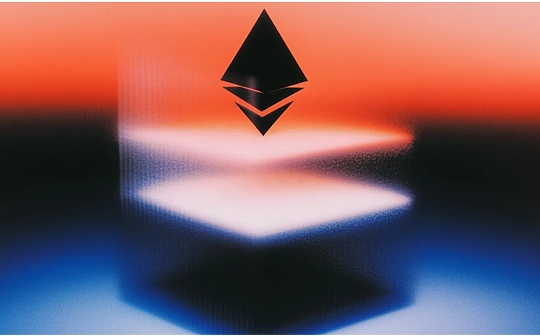
Source: Anthony Pompliano Podcast
This podcast Anthony Pompliano talks with Mattew Sigel, head of VanEck’s digital asset research, to discuss investment strategies, new pledge regulations and market cycles of crypto-related stocks.
He managesSince its launch in May, NODE ETF has yielded 28-30% in less than four months, far exceeding Bitcoin and S&P 500, adopts a diversified “barbell” strategy, covering traders, infrastructure and fintech companies.
In the interview,He disclosed in detail the current NODE ETF portfolio and specific targets, analyzed the potential of companies such as Entergy and TEPCO in Bitcoin mining, emphasizing the leverage risks in investment, and the impact of SEC pledge non-securitization decision on Ethereum, Solana, etc.
He believesThe four-year Bitcoin cycle may last but is more gentle, shared top market indicators such as capital rates and unrealized profits, and expressed their views on the current regulatory trends of the crypto market.
The following is an excerpt of the conversation.
Q1: NODE ETF was launched for more than three months, with a yield of 28-30%, twice that of Bitcoin and far exceeding indexes such as the S&P 500.How do you build a portfolio of cryptocurrency-related stocks?
Matthew Sige: Thanks for the invitation.We have run crypto stock strategies for nearly five years and have observed that they are extremely volatile.Highly leveraged stocks performed best at the top of the market with the biggest gains, but leverage is toxic to cryptocurrencies, which has proven in the past few cycles.
At the top of the market, the cryptocurrency stock index is full of highly leveraged assets, and it fell sharply during the reshuffle.Many cryptocurrency stock products have performed poorly, and from the perspective of investors, the return on investments in Bitcoin-related products is not ideal.therefore,NODE ETFs aim to invest widely, covering companies that clearly make profits from the on-chain economy, such as Coinbase, Bullish and other traders and infrastructure providers..
Bitcoin dominates about 65%, and large infrastructure companies involve electricity, electrical equipment and industrial infrastructure, which makes sense for earnings per share growth and valuation multiples.In addition, fintech e-commerce companies, similar to Magnificent 7, but focus on Latin America or Asia, have begun to adopt stablecoins on a large scale, bringing cost savings.Our investment scope covers more than 150 companies with digital asset strategies.
We adopt a barbell strategy, with one-third of funds investing in pure cryptocurrency stocks, as well as e-commerce, fintech peripheral sectors, as well as low-volatility sectors such as utilities, energy, and infrastructure, providing stability.
By avoiding large drawdowns through high diversification, diversification is particularly important when Bitcoin approaches its historical highs.The rising tide raises all ships, but may miss ten times the stock, which was a strategy a year ago.When the market draws back, we sell the low volatility part to increase volatility.Since its inception, excess performance has been accompanied by lower volatility, with twice the rate of return and lower volatility, which is our sweet spot.There is no guarantee that this performance will be repeated, but this is the goal.
Q2: When you mentioned utilities and electrical hardware companies, what specific examples are there?Do they only serve bitcoin miners, or do they have other intersections with cryptocurrencies?
Matthew Sige: Some utilities operate in growth areas of Bitcoin mining, such as Arkansas and Oklahoma.
This is similar to the way public stock investors think, studying vertical integration of the entire system.The growth in Bitcoin mining means demand for hardware, energy and geographical location.We sort out the chain, find growth regions and power suppliers, and evaluate their businesses.The cryptocurrency part is superposition, helping to identify opportunities, and then performing fundamental analysis of the company to determine whether it is expensive or conforms to the strategy.
Unless the company explicitly mentions bitcoin, blockchain or cryptocurrency as business drivers, it will not enter the scope of investment.We focus on the entire supply chain based on the volatility level management portfolio with Bitcoin and S&P 500.For example, Solaris SEI produces generators suitable for data center co-localization for mixed uses of Bitcoin mining and AI.Bitcoin miners are shifting from single mining to allocating part of their production capacity to AI, and need to upgrade equipment, and we are also paying attention to this area.
Q3: In the industry and energy fields, which other companies are included in the investment scope?What are the screening criteria for cryptocurrency companies?
Matthew Sige: We tend to hold optimistic companies because of our optimism about the cryptocurrency sector, and diversification approaches provide investors with a more moderate volatility experience.The screening criteria include the leverage ratio of the company’s relative profitability.
MicroStrategy, for example, accounts for 10% of the pure cryptocurrency stock index, but we hold only 3% or less because of its high leverage.When the market is at the top, the index is over-allocated with highly leveraged companies, which is the most risky.In the last cycle, many technology companies went bankrupt after turning into Bitcoin banks.This cycle of leverage generation is more professional, but bare assets such as Bitcoin are still volatile than stocks.We pursue compound interest growth and reduce drawdowns by finding companies with strong balance sheets, which is our basic investment philosophy.
Q4: TEPCO stocks have risen by 50% recently, driven by Bitcoin and cryptocurrencies, or is Japan’s demand for AI increased?How do you view its potential?
Matthew Sige: TEPCO has invested in Bitcoin mining company Agile X, with limited information and little media coverage.France’s EDF also began Bitcoin mining, with Marathon acquiring three-quarters of its data center business.The French parliament proposed formalizing Bitcoin mining to repay debts, and France’s surplus electricity was exported to Germany.Japanese lawmakers are also discussing increasing mining efforts, and the story of nuclear power restart has heated up.
TEPCO’s market value has dropped from US$30 billion to RMB6 billion, with high risks but low prices.France’s acceptance has increased, and if Japan follows up, TEPCO may benefit.Even without this trend, risk and rewards are attractive.
We tweeted to encourage TEPCO to talk more about mining business, believing that this will increase the valuation multiple.Fundamental stories are combined with Bitcoin integration, and if the business expands, the stock price may rise sharply.We use our in-house utilities and energy expertise to work with analysts in natural resource strategies and have worked well.
Q5: You mentioned that leverage is one of the investment risks, especially in digital assets Treasury companies (DATs).If you enter a bear market, what traps should you be vigilant?
Matthew Sige: Leverage is the main risk.Our digital asset exposure shows that position size is critical, especially when dealing with assets with volatility of 80%, 90% or 100%.We support some companies, but are cautious than our competitors.In public stock funds, we look for valuation arbitrage opportunities. Valuation is important for DATs, especially small-cap companies. Management can affect market signals through repurchase authorization and other operations..
I am not particularly bearish. Some companies will succeed, similar to MicroStrategy, and continue to trade at a value higher than net assets.But many companies may fail, capital is trapped, and executives are holding millions of salaries. If they trade at 0.8 times NAV, it will be difficult for shareholders to make the right decision.We may further discuss the topic of future corporate governance.
Q6: The SEC clearly states that pledge is not a securities. What impact will it have on the pledge strategies of individuals, private equity funds and public companies?
Matthew Sige:Solana ETF is coming soon in the fall, and we strive to support staking and creating redemptions in place, Market makers use Solana to create shares, reduce friction and specialize in staking.The threshold for due diligence for ETF staking coins is high, and it requires organizational recognition. Regulatory attention is paid to partners. SOC certification is important and may require a collection of US verifiers.Three years ago, overseas verifiers were safer, and now it may be more beneficial in China.
The importance of pledge has not changed much. Many altcoins have high inflation rates and investors have been diluted. They need to lock in pledge to maintain their network share, and the returns only offset inflation.The US dollar depreciates by 4% per year over 50 years, and the returns of Treasury bonds remain flat or negative. If pledged Ethereum or Solana only offsets the dilution, non-pled persons will suffer losses and the actual return will be nearly zero.Ethereum and Solana have positive returns on active blockchain and have reasonable positions.In the early days of this field, most blockchain fees were low and the token holder mechanism was immature, similar to high-liquidity venture capital assets.
Q7: The government has a positive attitude towards Bitcoin and cryptocurrencies, and the Finance Minister mentioned “budget neutral” purchases.What regulatory trends do you pay attention to in Washington?
Matthew Sige: I have paid less attention to Washington recently because the foundation has been laid, and the investment banking case shows that capital formation catalysis.I have low expectations for the federal government to buy bitcoin, and the Bessant comment may reveal the truth, they won’t sell it.Large-scale budget-neutral acquisition of Bitcoin requires legislative support, and major financial issues require legislation even if they are neutral.
Q8: Some people speculate that the government may nationalize a large number of Bitcoin companies such as MicroStrategy.How do you view this possibility?
Matthew Sige: Someone on Twitter mentioned that he was buying Bitcoin for the government, which may be a matter of a generation, and rational investors will not invest based on it.We consider this possibility, but buying and selling companies or Bitcoin is not based on this.
If the government believes that Bitcoin is important, there are listed companies and ETFs in the United States that hold a large amount of Bitcoin.The government asked to hand over assets 100 years ago, and today the Internet and the relationship between the government and the people made this difficult.The Minister of Finance proposed to confiscate the procedures against crime, which is easy to cause misunderstandings in the Internet era.If Bitcoin supports the issuance of 20% of new Treasury bonds, considering moral risks is reasonable, and it will fall by 99%.Currently and in the coming years, the government is more likely to make profits through financial suppression, such as taxing Bitcoin mining concessions or self-custodial transactions, which makes it easier to operate.
Q9: The issuance of stablecoins may partially privatize “money production”.What related opportunities or risks do you focus on?
Matthew Sige:Opportunity clearing in stablecoin transactions.The federal government will not issue stablecoins, the law may make CBDC impossible, and individual states may try, Wyoming leads.
Merchant acceptance is a question, such as whether Wyoming stablecoin is available in Miami.State chartered banks can issue dollar-endorsed stablecoins, similar to branded electronic dollar.VanEck Ventures poached a team from Circle, and Wyatt invested in the next generation of stablecoin clearing houses.
Q10: Will the four-year Bitcoin cycle last, or will it change due to ETFs and corporate purchases?
Matthew Sige:I think it will last, but it is more gentle.The cycle has existed for a long time and is trustworthy.The midterm elections are heating up next year, Washington makes less progress, and interest rates may be cut.It’s still early, but I’m focusing on the year of decline, the cycle will recover, and ETFs and corporate purchases provide a balance.
Q11: What data points do you use to determine whether the market is close to the top?What are the unique indicators?
Matthew Sige:We use the capital rate to judge the short-term top. If the cost of leveraged positions reaches double digits for several consecutive weeks, it indicates the end, and historical data supports.There is no such situation at present. The price of the market occasionally soared and it has not continued.The proportion of blockchain’s unrealized profits has increased slightly, and it has not reached the dangerous zone.Anecdotal data such as application downloads or ex-wife sending Ethereum text messages also prompt risks. I have received one and am a little worried.






